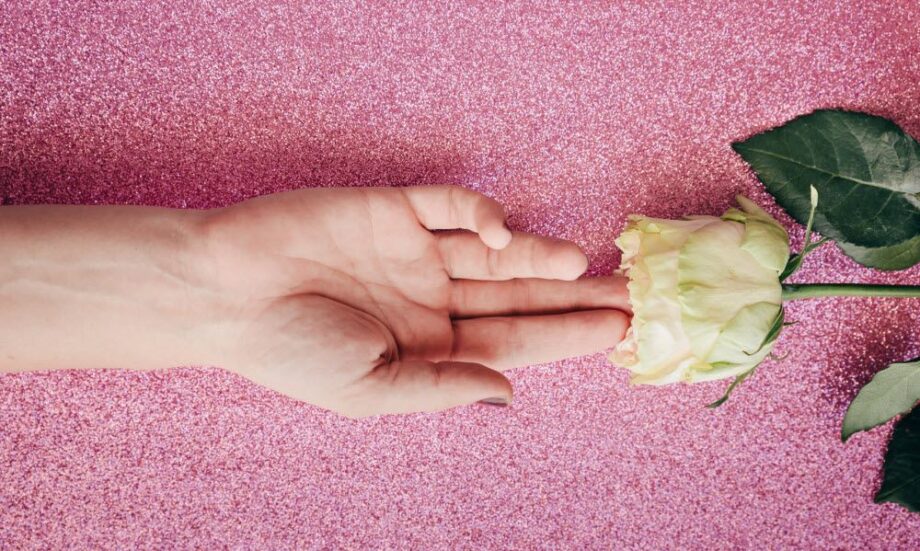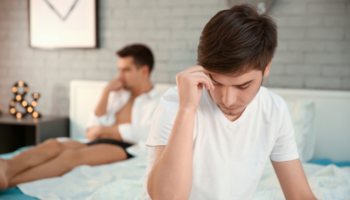A lot of us grew up thinking of masturbation as weird, especially those of us who were caught and scolded. (See: Ms. Pfeuffer as a teen listening to Dr. Ruth Westheimer’s radio call-in show, "Sexually Speaking," on her Sony Walkman under the sheets late at night.)
As a youth, the nuts and bolts of bodies and anatomy were never discussed, nor were key pillars of puberty like periods, contraception or sexual health. I was not supposed to think about sex, much less derive pleasure from it – solo, partnered or otherwise.
I first discovered the power of my below-the-belt private parts on the yellow bath rug in my parents' bathroom. Behind a locked door, I self-explored between ballet lessons, "The Brady Bunch," and bedtime. I was 6 years old.
When I lost my virginity at the age of 15, my mother called me a whore. Instead of seizing the opportunity to have a frank discussion about sex, I was slut-shamed and deemed damaged goods. When she died two years later, I bee-lined to the nearest sex toy shop and bought my first vibrator.
Cultural, religious and familial influences on how women perceive self-pleasure are pervasive. As a girl, I was gobsmacked by this trifecta of guilt and shame. Masturbation was, and is, still very much a highly-stigmatized topic, often considered something "good" girls don't do.
“Masturbation is typically not allowed to be the topic in any classroom discussion,” says Dr. Juliana Morris. “There are some school districts where even if a child brings it up as a question, teachers are not allowed to answer it.” What Dr. Morris wants is for boys and girls to be educated on the different genders and the bodies that they have, what those parts are and what those parts do.
“To me, it’s a game changer when you can teach girls and boys about internal and external organs and how that relates to them and how their body responds to pleasure,” she says. “Sex ed has always fallen short in this respect, in getting into the societal aspects of pleasure and helping to reduce the shame and help to empower people.”
As a woman who deems a daily ménage-a-moi is a must-do – a routine habit, like brushing my teeth or meditating – here’s how I’d rewrite the narrative for young women: We need to create safe spaces where young adults feel comfortable confiding in a trusted adult on sex and sexuality. Nowadays, kids hunt and peck much of their sex ed from porn and the internet. “Young girls can watch porn and see women masturbating or showing what is a show of masturbation, but it's isolated and insulated and it's usually more like a self-taught program rather than in a safe environment where they’re being taught by experts or they’re able to ask questions specific to their own bodies or their own needs,” Dr. Morris says.
“That’s a huge harm and disservice to this generation, because not everything on the internet is accurate and not everything being written or shown is related to your own body. If you’re not given the format to ask questions specific to your own body, you’re missing out on such a huge piece of the puzzle.” Many young girls suffer from body image issues; I was no exception. Growing up, my mother’s claim to fame was that she never weighed more than 118 pounds – and that was when she was pregnant with me. Throughout my childhood, there was a major emphasis on outward appearance. The constant chorus was, “If you lose 10 more pounds, boys will like you.” It was never about healthy living or feeling good about my body. My body was never celebrated. Today, I love and embrace my abundant curves. Become besties with your body. Loving yourself feels good. It'll also make you more confident in bed. One of the easiest ways to connect with yourself is via masturbation. Not only is it healthy and normal to touch yourself, it feels good. Plus, women have double the number of nerve endings in their clits as men have in their penises, 8,000 compared to 4,000, says Jenny Block, author of "O Wow: Discovering Your Ultimate Orgasm." Still, it's hard to experience pleasure if you don't appreciate or understand the skin you're in.
A few years ago, I took a Bodysex workshop with iconic "Sex for One" author and sex educator Betty Dodson, aka the "Godmother of Masturbation." One of the most basic and brilliant elements of the weekend was a genital show- and-tell, where one-by-one, women sat in front of the group with a light and mirror and took a good hard look at their every crease, flap and fold. In my four-plus decades, I’d never once gotten all Nancy Drew like this on my goods. The simple exercise made me appreciate my vulva in a whole new light.
“One of the great things about Bodysex is that it shows that every body is normal, we’re all very different and you're not supposed to look a certain way,” says Dr. Morris, another workshop attendee.
Read more about the Bodysex Workshop in How the Magic Wand Helped Shape My Orgasmic Pleasure.
There’s way too much talk about how much and what kinds of pleasure are acceptable. This don’t-do model for masturbation needs to go. All I know (now) is that pleasure is my birthright. As girls, we’re taught to please others. The cycle of prioritizing our partners’ pleasure and settling for second-rate sex must stop. It’s perfectly OK to ask for what pushes our pleasure buttons, despite every message of inferiority we’ve been fed.
For many women, reaching orgasm requires patience. Had I known that most women need 20 to 30 minutes of consistent clitoral stimulation to climax, I would’ve avoided a lot faked orgasms and apologies for “taking too long.” As women, we’ve learned from social cues to not take up too much space. It’s taken great effort for me to sit back, relax and take however long it takes to find my happy place. And that doesn’t always mean getting off. According to a recent study in the Archives of Sexual Behavior, there is a notable gap between heterosexual men and women in frequency of orgasm during sex. “There’s certainly a pattern and a trend of girls being sexual and most of that is geared toward pleasing their partner and not pleasing themselves,” says Dr. Morris. “If we’re not teaching them that self-pleasure is a part of this and how their body works in order to have pleasure, then it’s really a hard thing to transition to when they do decide they want to have that, when they want to have a sexual relationship, and they’ve had years, in some cases, of putting their partner before them always and not having the words to say, ‘This is what I want and this is what I like.’” Promoting pleasure at a young age could help reduce that orgasm gap by giving girls the tools to recognize that it's healthy to seek pleasure and it's OK to ask for it. Mutual masturbation can be a sexy (and safer) alternative to intercourse. It can be super-hot to watch a partner pleasure themselves. I could watch my boyfriend work his Magic Wand just below the head of his penis and the pleasure it yields all the damn day long. If only I’d deferred to this intimate form of sexual expression, I’d likely have avoided, or at least delayed, going “all the way” with several partners in my teens and early 20s. Girls are sent so many mixed messages about sex and sexuality. Screw the guilt and shame. We need to tear down the mindset where female desire is disregarded. Every girl deserves to enjoy a little DIY, party-for-one pleasure.
Ryn Pfeuffer is a versatile print and digital writer specializing in sex, lifestyle, and relationship topics. She got her start in the mid-90s at the Philadelphia Weekly, managing a 10-page section of the newspaper and more than 500 lonely hearts.Her professional stock skyrocketed when she started writing a saucy (and pre-Carrie-Bradshaw-era) dating advice column called “Ask Me Anything.” She appeared regularly on local radio stations and late-night TV as an expert on everything from grooming habits to threesomes.Over the past two decades, her work has appeared in more than 100 media outlets including Marie Claire, Playboy, Refinery29, The Globe and Mail, The Washington Post, WIRED, and Thrillist. She adopted a pseudonym and was AVN’s (Adult Video Network) first female porn reviewer – while penning children’s books at the same time.More recently, she is the author of 101 Ways to Rock Online Dating (2019). She lives in Seattle with her rescue dog, Mimi. You can find her on Twitter @rynpfeuffer or IG @ryn_says




